Grace Elliot's Blog: 'Familiar Felines.' , page 30
June 15, 2011
A Victorian Wonder.
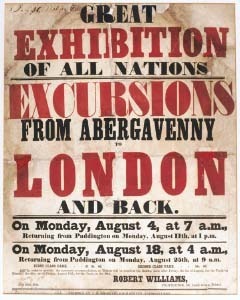 The Great Exhibition - 1851.
The Great Exhibition - 1851.
What have these objects in common?- A knife with 1,851 blades- Furniture carved from giant lumps of coal- A bed that became a life raft- The world's largest mirror- The model of a suspension bridge designed to link England with France?
Answer: They were all displayed at The Great Exhibition of 1851.
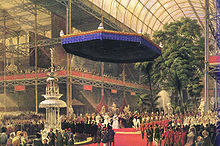 Queen Victoria opening The Great Exhibition, 1st May 1851.Housed within the magnificent Crystal Palace (see previous post), Prince Albert's idea was to draw together up-to-date technology from all over the world, to display under one roof.
Queen Victoria opening The Great Exhibition, 1st May 1851.Housed within the magnificent Crystal Palace (see previous post), Prince Albert's idea was to draw together up-to-date technology from all over the world, to display under one roof. The concept was a roaring success. The Great Exhibition received over 827,000 visitors in the (just under) six months it was open. The busiest day was October 7th (just before the Exhibition closed) with a total of 110,000 visitors on that one day. At one point 92,000 people were inside the Crystal Palace at the same time – a world record of the day.
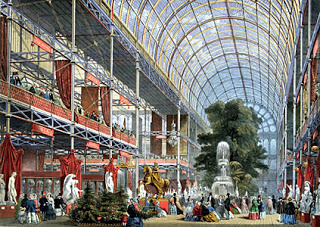
But amidst the hustle and crush, there was one oasis of calm – the Newfoundland Exhibition. Their display took the visitor through the production of cod liver oil and mysteriously, wasn't very popular.
The American display nearly didn't happen at all. Congress provided sufficient funds to ship their exhibits as far as England but no further. With their goods impounded at the docks, it was an American philanthropist, George Peabody, who stumped up the $15,000 to get the display up and running. However, after this unpromising start, the goods themselves came as a huge surprise. There were innovative machines for doing really useful things such as a sewing machine by Elias Howe, an automated reaper by Cyrus McCormick and an automated revolver by Samuel Colt.
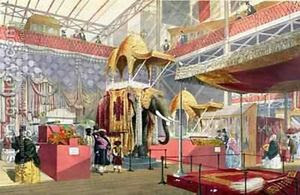 The India Pavilion at The Great Exhibition.
The India Pavilion at The Great Exhibition. But strangely, the most popular place within The Great Exhibition were the elegant retiring rooms. Furnished with flushing toilets they were a revelation in themselves and not to be missed. In one day alone, these toilets accommodated the comfort of 11,000 people – quite something when at the time the British Museum boasted of having two, outside privies.
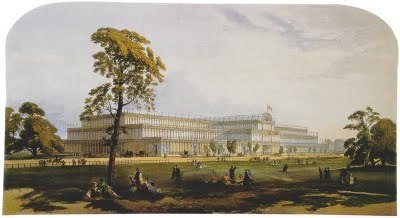 The Crystal Palace, home to The Great Exhibition, in Hyde Park.
The Crystal Palace, home to The Great Exhibition, in Hyde Park.The Great Exhibition was such a success that it generated a profit of 186,000 GBP. With this money thirty acres of land, just south of Hyde Park was purchased which became affectionately known as 'Albertropolis.' It was on this site that most of the famous institutions and museums that dominate London to this day were built: The Royal Albert Hall, Victoria and Albert Museum, Natural History Museum and the Royal Colleges of Art and of Music. So even though The Great Exhibition is gone, the legacy lives on.
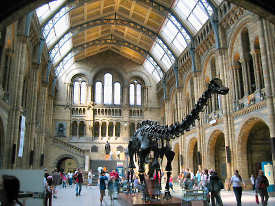 The entrance hall to the Natural History Museum, London - in the modern day.
The entrance hall to the Natural History Museum, London - in the modern day.
Published on June 15, 2011 08:36
June 12, 2011
'Miraculously Improbable,' - The Crystal Palace.
'Miraculously Improbable' – the Crystal Palace.
Following my midweek post 'Regency Panes', let's look at a Victorian glass building:"As miraculously improbable as a giant soap bubble."
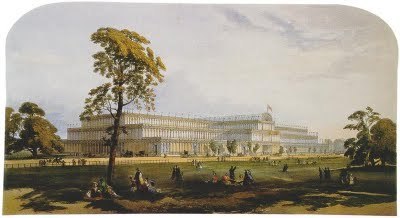 Crystal Palace in Hyde Park, 1851. (Thanks to mytimemachine.co.uk)
Crystal Palace in Hyde Park, 1851. (Thanks to mytimemachine.co.uk)
The building is, of course, the Crystal Palace – home of The Great Exhibition, 1851. But this wonderful edifice didn't start life with such a snappy name; it's original title was,'The Palace of the Great Exhibition of the Works of Industry of All Nations.' When the Punch columnist, Douglas Jerrold, saw the finished building he dubbed it 'The Crystal Palace', and the name stuck!
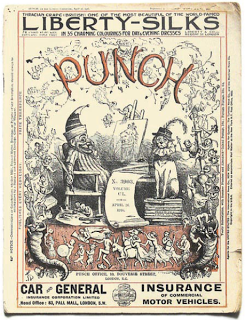 Punch Magazine, reknown for its dry wit and caustic humour. The idea for the Great Exhibition is credited to a civil servant, Henry Cole (incidentally, Mr Cole is also credited with the invention of the Christmas card – as a way of encouraging people to use the penny post.) But designing a suitable building to house the exhibition did not go smoothly. A competition ran, but of the 245 entries, all were rejected as unsuitable. It fell to the unlikely person of the head gardener at Chatsworth House, Joseph Paxton, to have the idea of a giant building based on hot houses.
Punch Magazine, reknown for its dry wit and caustic humour. The idea for the Great Exhibition is credited to a civil servant, Henry Cole (incidentally, Mr Cole is also credited with the invention of the Christmas card – as a way of encouraging people to use the penny post.) But designing a suitable building to house the exhibition did not go smoothly. A competition ran, but of the 245 entries, all were rejected as unsuitable. It fell to the unlikely person of the head gardener at Chatsworth House, Joseph Paxton, to have the idea of a giant building based on hot houses.
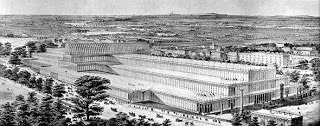 Contempory view of Crystal Palace.
Contempory view of Crystal Palace.
With a certain serendipity, two events meant his design became possible. First was the invention of sheet glass (which cooled more quickly, required less polishing and could therefore be produced more rapidly than plate glass) and secondly, the abolition of the Window Tax (1696, tax on the number of windows) and Glass Tax (1746 tax on the weight of glass in a window) The beauty of Paxton's design was that the building was made from interlocking parts which could be manufactured off-site, and assembled on-site; like a giant jigsaw puzzle. Cast iron trusses measuring 3 foot by 23 foot 3 inches, formed a giant frame from which a total of a million square foot of glass hung – a third of England's glass production for a year.
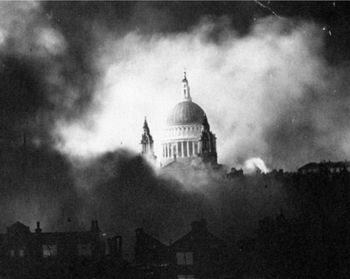 St Paul's Cathedral during The Blitz, WW II.
St Paul's Cathedral during The Blitz, WW II.
The finished building measured exactly 1,851 feet long (as a tribute to the year, 1851, when The Great Exhibition was opened). The interior volume was so vast that four Saint Paul's Cathedral would fit inside; but the Crystal Palace took a mere 35 weeks to build, whereas Saint Paul's Cathedral took 35 years.
In 1851 this glinting, transparent building was almost beyond the public's imagination, "..as miraculously improbable as a giant soap bubble."
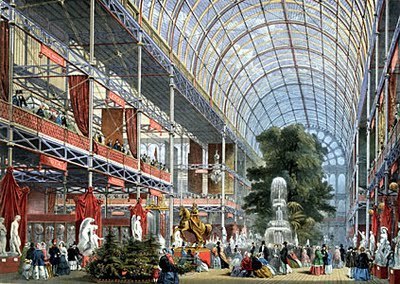 The magnificent interior, large enough to accomodate Hyde Park's elm trees.
The magnificent interior, large enough to accomodate Hyde Park's elm trees.
[ Next Wednesday – NEW blog post on: Terrific Great Exhibition Trivia ]

Following my midweek post 'Regency Panes', let's look at a Victorian glass building:"As miraculously improbable as a giant soap bubble."
 Crystal Palace in Hyde Park, 1851. (Thanks to mytimemachine.co.uk)
Crystal Palace in Hyde Park, 1851. (Thanks to mytimemachine.co.uk)The building is, of course, the Crystal Palace – home of The Great Exhibition, 1851. But this wonderful edifice didn't start life with such a snappy name; it's original title was,'The Palace of the Great Exhibition of the Works of Industry of All Nations.' When the Punch columnist, Douglas Jerrold, saw the finished building he dubbed it 'The Crystal Palace', and the name stuck!
 Punch Magazine, reknown for its dry wit and caustic humour. The idea for the Great Exhibition is credited to a civil servant, Henry Cole (incidentally, Mr Cole is also credited with the invention of the Christmas card – as a way of encouraging people to use the penny post.) But designing a suitable building to house the exhibition did not go smoothly. A competition ran, but of the 245 entries, all were rejected as unsuitable. It fell to the unlikely person of the head gardener at Chatsworth House, Joseph Paxton, to have the idea of a giant building based on hot houses.
Punch Magazine, reknown for its dry wit and caustic humour. The idea for the Great Exhibition is credited to a civil servant, Henry Cole (incidentally, Mr Cole is also credited with the invention of the Christmas card – as a way of encouraging people to use the penny post.) But designing a suitable building to house the exhibition did not go smoothly. A competition ran, but of the 245 entries, all were rejected as unsuitable. It fell to the unlikely person of the head gardener at Chatsworth House, Joseph Paxton, to have the idea of a giant building based on hot houses. Contempory view of Crystal Palace.
Contempory view of Crystal Palace. With a certain serendipity, two events meant his design became possible. First was the invention of sheet glass (which cooled more quickly, required less polishing and could therefore be produced more rapidly than plate glass) and secondly, the abolition of the Window Tax (1696, tax on the number of windows) and Glass Tax (1746 tax on the weight of glass in a window) The beauty of Paxton's design was that the building was made from interlocking parts which could be manufactured off-site, and assembled on-site; like a giant jigsaw puzzle. Cast iron trusses measuring 3 foot by 23 foot 3 inches, formed a giant frame from which a total of a million square foot of glass hung – a third of England's glass production for a year.
 St Paul's Cathedral during The Blitz, WW II.
St Paul's Cathedral during The Blitz, WW II. The finished building measured exactly 1,851 feet long (as a tribute to the year, 1851, when The Great Exhibition was opened). The interior volume was so vast that four Saint Paul's Cathedral would fit inside; but the Crystal Palace took a mere 35 weeks to build, whereas Saint Paul's Cathedral took 35 years.
In 1851 this glinting, transparent building was almost beyond the public's imagination, "..as miraculously improbable as a giant soap bubble."
 The magnificent interior, large enough to accomodate Hyde Park's elm trees.
The magnificent interior, large enough to accomodate Hyde Park's elm trees.[ Next Wednesday – NEW blog post on: Terrific Great Exhibition Trivia ]
Published on June 12, 2011 08:26
June 8, 2011
Regency Panes - Why Windows Are More Interesting Than They Appear.
 Photo courtesy of Leo Reynolds, http://www.flickriver.com/ This week I discovered a wonderful book, 'Regency Style' by Steven Parissien, and the chapter on windows is especially fascinating. For instance, did you know that the 'bottle pane' windows associated with old-fashioned bow windows were NEVER used at the front of a house and this glass was a fire hazard? (More about this, later.)
Photo courtesy of Leo Reynolds, http://www.flickriver.com/ This week I discovered a wonderful book, 'Regency Style' by Steven Parissien, and the chapter on windows is especially fascinating. For instance, did you know that the 'bottle pane' windows associated with old-fashioned bow windows were NEVER used at the front of a house and this glass was a fire hazard? (More about this, later.)
In the 18th century there were two methods of producing glass.
Crown Glass.
The best quality window panes were made from crown glass. To make this, a globe of molten glass was blown and then flattened on a bed of sand into a disco some five or six foot in diameter.
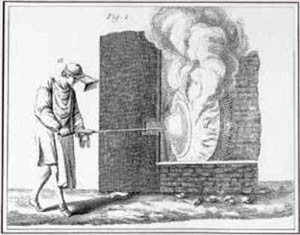 Image courtesy of the Bevan Family, http://bevan.rth.org.uk/
Image courtesy of the Bevan Family, http://bevan.rth.org.uk/
"…a loud ruffling noise, like the rapid unfurling of a flag in a strong wind."Contemporary description of crown glass being blown.
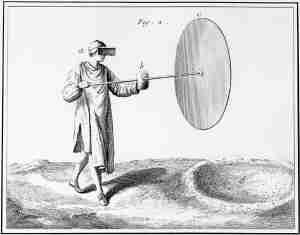 Image courtesy of The Bevan Family, http://bevan.rth.org.uk/
Image courtesy of The Bevan Family, http://bevan.rth.org.uk/
The blowing rod or 'pontil' was cut from the disc, and once the glass had cooled a little it was cut into panes measuring ten by fifteen inches.
Muff Glass.
Panes of an inferior quality were made by swinging the molten glass was swung over a sand pit until it formed long cylinders, these were then cut open, flattened out and cut to size.
Window Glazing.
The limitation of manufacturing flat panes of glass restricted their size, and this is where glazing came in. The typical Georgian or Regency window had a sash treatment, described as 'Eight over eight', 'six over six,' or 'four over four', depending on how many panes were used.
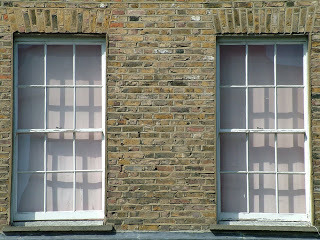 Typical Georgian '6 by 6' sash windows.
Typical Georgian '6 by 6' sash windows.
Photo courtesy of the Bevan Family. Apparently the workmanship of these windows was much admired, according to one contemporary report (quoted below.)
"Nothing surprised me more at first, than the excellent workmanship of the doors and windows; no jarring with the wind, no currents of air, and the windows, which are all suspended by pulleys [sash windows] rise with a touch."
Window Myths.
When thinking of Georgian shops, many of us conjure images of sweeping bow front windows with bottle glass panes. Actually, these were very rare.Firstly, the bow windows weren't allow to project more than ten inches into the street (1774 Building Act), and less so in narrow lanes. Secondly, bottle or bullion glass (the knobbly pane left when the pontil was removed during crown glass production) was never used on a front elevation.
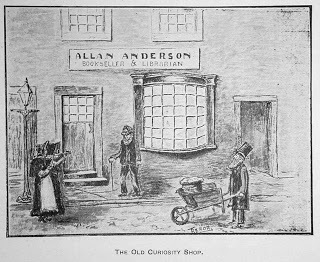
Bottle Glass.
Lumpy bottle glass was considered inferior and used out of sight, such as in rear of a building, north facing windows, or kitchen basement windows. Partly this was because the glass was unsightly, but mainly because it was a fire hazard! The indentation focused the sun's rays, in the much the same way as a magnifying glass, and the unwary risked their curtains being set alight.
A revolution in glass making – plate glass.
In 1832, Lucas Chance revolutionized glass making with an industrialized process he imported from the continent to use in his factory in Stourbridge. This allowed for the manufacture of larger and more uniform panes of glass…such as were used in The Crystal Palace in 1851….[for trivia about The Crystal Palace and The Great Exhibition see my next blog post, this Sunday.]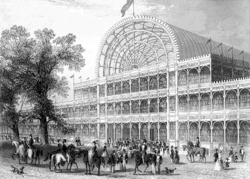 Crystal Palace, home of The Great Exhibition, 1851.
Crystal Palace, home of The Great Exhibition, 1851.
 Photo courtesy of Leo Reynolds, http://www.flickriver.com/ This week I discovered a wonderful book, 'Regency Style' by Steven Parissien, and the chapter on windows is especially fascinating. For instance, did you know that the 'bottle pane' windows associated with old-fashioned bow windows were NEVER used at the front of a house and this glass was a fire hazard? (More about this, later.)
Photo courtesy of Leo Reynolds, http://www.flickriver.com/ This week I discovered a wonderful book, 'Regency Style' by Steven Parissien, and the chapter on windows is especially fascinating. For instance, did you know that the 'bottle pane' windows associated with old-fashioned bow windows were NEVER used at the front of a house and this glass was a fire hazard? (More about this, later.)In the 18th century there were two methods of producing glass.
Crown Glass.
The best quality window panes were made from crown glass. To make this, a globe of molten glass was blown and then flattened on a bed of sand into a disco some five or six foot in diameter.
 Image courtesy of the Bevan Family, http://bevan.rth.org.uk/
Image courtesy of the Bevan Family, http://bevan.rth.org.uk/"…a loud ruffling noise, like the rapid unfurling of a flag in a strong wind."Contemporary description of crown glass being blown.
 Image courtesy of The Bevan Family, http://bevan.rth.org.uk/
Image courtesy of The Bevan Family, http://bevan.rth.org.uk/The blowing rod or 'pontil' was cut from the disc, and once the glass had cooled a little it was cut into panes measuring ten by fifteen inches.
Muff Glass.
Panes of an inferior quality were made by swinging the molten glass was swung over a sand pit until it formed long cylinders, these were then cut open, flattened out and cut to size.
Window Glazing.
The limitation of manufacturing flat panes of glass restricted their size, and this is where glazing came in. The typical Georgian or Regency window had a sash treatment, described as 'Eight over eight', 'six over six,' or 'four over four', depending on how many panes were used.
 Typical Georgian '6 by 6' sash windows.
Typical Georgian '6 by 6' sash windows.Photo courtesy of the Bevan Family. Apparently the workmanship of these windows was much admired, according to one contemporary report (quoted below.)
"Nothing surprised me more at first, than the excellent workmanship of the doors and windows; no jarring with the wind, no currents of air, and the windows, which are all suspended by pulleys [sash windows] rise with a touch."
Window Myths.
When thinking of Georgian shops, many of us conjure images of sweeping bow front windows with bottle glass panes. Actually, these were very rare.Firstly, the bow windows weren't allow to project more than ten inches into the street (1774 Building Act), and less so in narrow lanes. Secondly, bottle or bullion glass (the knobbly pane left when the pontil was removed during crown glass production) was never used on a front elevation.

Bottle Glass.
Lumpy bottle glass was considered inferior and used out of sight, such as in rear of a building, north facing windows, or kitchen basement windows. Partly this was because the glass was unsightly, but mainly because it was a fire hazard! The indentation focused the sun's rays, in the much the same way as a magnifying glass, and the unwary risked their curtains being set alight.
A revolution in glass making – plate glass.
In 1832, Lucas Chance revolutionized glass making with an industrialized process he imported from the continent to use in his factory in Stourbridge. This allowed for the manufacture of larger and more uniform panes of glass…such as were used in The Crystal Palace in 1851….[for trivia about The Crystal Palace and The Great Exhibition see my next blog post, this Sunday.]
 Crystal Palace, home of The Great Exhibition, 1851.
Crystal Palace, home of The Great Exhibition, 1851.
Published on June 08, 2011 09:15
June 5, 2011
Breath of Death (Part 2 of 2)
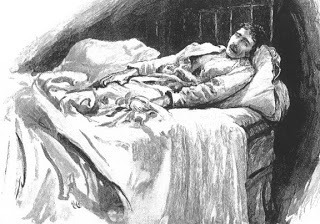 The previous post recounted how the Victorian fashion for green wallpaper could have unexpected...and deadly consequences....because arsenic was used to create rich colours (scroll down to read this post.) Today we look at how green wallpaper entered Victorian popular culture - as a potential murder weapon!
The previous post recounted how the Victorian fashion for green wallpaper could have unexpected...and deadly consequences....because arsenic was used to create rich colours (scroll down to read this post.) Today we look at how green wallpaper entered Victorian popular culture - as a potential murder weapon! 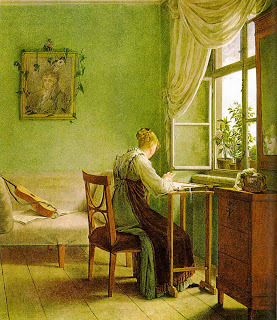
The 'Chambers Journal of Popular Literature, Science and Arts' relates the story of an orphan boy called Sir Frederick Staunton.
Freddie's guardian, his Uncle, wished the boy out of the way so that he could inherit, and so sent his ward to stay with the local vicar. His instructions were to give the boy the best room in the house, a room which just happened to be decorated with a wallpaper of a: "..rich, deep, emerald hue." Apparently, the locals claimed the room was cursed by a monk in the time of Henry VIII, in retribution for his dissolution of the monasteries, it being said that:
"Several deaths had occurred in the green chamber in particular, for the most part blooming girls who had faded and pined under 'the curse' until their dim eyes had looked their last at the emerald-tinted walls."
Fortunately for a rapidly sickening Freddie, a visiting physician spotted the significance of the green wallpaper, linked it to the vapours given off from the arsenic tinted pigment and had the boy removed from that room .... and all ended happily.
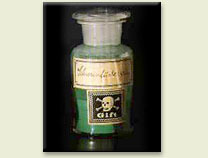
Of course life is never that straighforward and unhappily, arsenic content wasn't restricted to green wallpaper, but also present in blue, pink, yellow, brown, gray and white. In 1870's America, the Michigan Board of Health assembled books of samples of arsenical wallpaper, called 'Shadows from the Walls of Death' circulated to every state library with the aim of increasing awareness of this silent, but deadly, danger.
Even so, it seems Queen Victoria remained unaware of the risk of arsenic in wallpaper, when in 1879 she abraided a guest for being late for his audience. His defence was that he had slept poorly because of the green wallpaper in his bedroom. Astonished to learn of the dangers of arsenical papers the Queen immediately had every bit of wallpaper stripped out of Buckingham Palace.
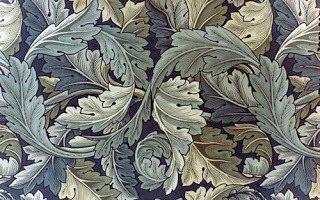 An example of a William Morris wallpaper.
An example of a William Morris wallpaper.However not everyone was so easily convinced. The famous artist and designer, William Morris, only removed green arsenic pigments from his wallpapers under protest, writing in 1885:"….it is hardly possible to imagine….a greater folly…than the arsenic scare."
Eventually in the 1870's it was public fear of poisoning that saw the decline in fashion for green. Some manufacturers' tried to forestall this by printing 'Free From Arsenic' on the back of their papers. This backfired since when tests were run on supposedly 'arsenic free' papers, were found to contain very high levels indeed. Public confidence never recovered and green walls went out of fashion!
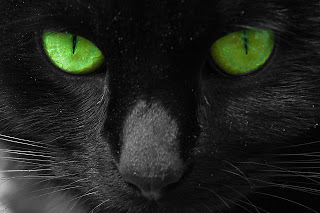
Published on June 05, 2011 11:19
June 1, 2011
"Breath of Death."
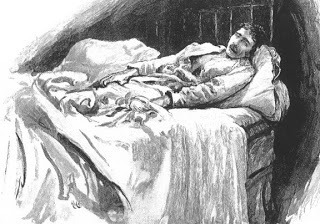
"A great deal of slow poisoning is going on in Great Britain."Dr William Hinds 1857
In the 1850's a change came over the nation. Oil lamps, with their brighter light, replaced candles as the main source of household illumination and so walls no longer needed to be pale reflective colours. Dark shades became fashionable and of these, the greatest demand was for Scheele's Green and Schweinfurt Green. Anyone who considered themselves fashionable, had to have a 'green room,' and manufacturers estimated that in 1858 there were an estimated 100 million squares miles of green wallpaper in Britain alone. Unfortunately, what people failed to realize at the time was that their highly prized wallpaper was coloured with arsenic, and very likely to be poisoning them.
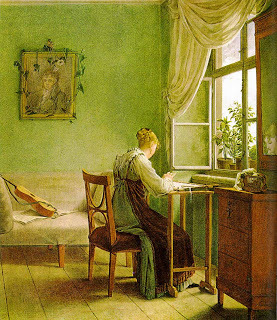 The first hint of trouble was recorded in the Limehouse district of London, in 1862. First one child, then a second, and tragically a third from the same family, died with symptoms similar to diphtheria. However, after an inspection of their home by the Medical Health Officer, he was not convinced and made a special note of the green wallpaper in the children's bedroom. After tests it became clear that the painful, constricted throats that ailed the children were not due to diphtheria at all, but arsenic found in the Scheele's green wallpaper decorating their nursery.
The first hint of trouble was recorded in the Limehouse district of London, in 1862. First one child, then a second, and tragically a third from the same family, died with symptoms similar to diphtheria. However, after an inspection of their home by the Medical Health Officer, he was not convinced and made a special note of the green wallpaper in the children's bedroom. After tests it became clear that the painful, constricted throats that ailed the children were not due to diphtheria at all, but arsenic found in the Scheele's green wallpaper decorating their nursery. 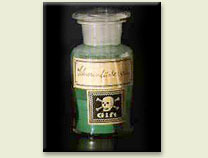
A correspondence on the subject of arsenical wallpapers took place in The Times newspaper. One respondent, signing himself 'A. Sufferer' wrote that when he told his decorator that he was distributing poison, the man then: "…denied the possibility of ill resulting and offered to eat a pound of paper."
The wall paper manufacturers' had much lose economically, and with a similar attitude to the tobacco manufacturers of the 1960's, denied the evidence for harm, saying things such as:"Look, I can rub it [wallpaper] hard, I can lick it [wallpaper] a dozen times with my hand and nothing comes off."Their defence was that good quality wallpapers didn't shed arsenical dust and so could not poison people. It took until the 1890's for science to show that arsenical vapour (not just solid arsenic) was deadly.
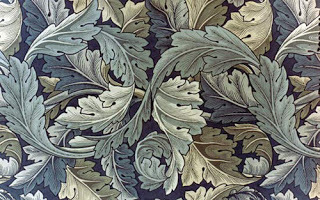
As stories spread people became more suspicious of that their décor was making them ill. When one lady sickened, and her pet cat's fur fell out, she swapped rooms with her maid and made a full recovery…whilst the maid took sick. To make matters worse, the Victorian remedy for illness was to be confined to a room and avoid cold air. This meant that people suffering with headaches, fatigue, chest complaints and nauseau (all symptoms of arsenical poisoning) were likely to take to their beds in a green bedroom with the windows tight shut against draughts and thus :
"Breath air loaded with the breathe of death."
It didn't take long for infamous green wallpaper to appear in fiction…as a murder weapon. CONTINUED THIS SUNDAY :
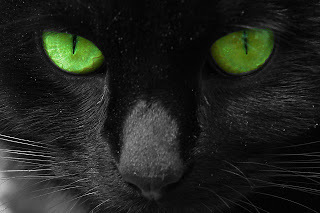
Published on June 01, 2011 08:41
May 25, 2011
Albert and Victoria's Family Home.
Grace:
Today I'm doubly delighted: firstly to welcome historical fiction author, Debra Brown, to the blog, and secondly because Debra writes about Osborne House on the Isle of Wight, a place very close to my heart.
Welcome Debra!
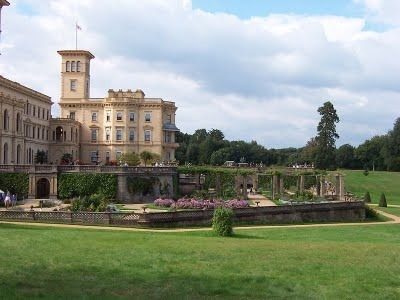 Osborne House - the main building can be glimpsed through trees for miles around.
Albert and Victoria's Family Home
Osborne House - the main building can be glimpsed through trees for miles around.
Albert and Victoria's Family Home
(Note that I did not say Victoria and Albert!)
The very first years of their marriage was a real trial for Albert. He had grown up in The Rosenau, the country residence of the Dukes of Coburg, enjoying the rural delights of life. After marrying the Queen, he was stuck in HER homes, Buckingham Palace, with so much soot in the air that they could barely breath (nor could anyone else in the Town)and Windsor Castle, which at the time had not the parks and grounds that it does today. Indeed, they were hemmed in tightly in comparison. Albert was relegated to the position of a disapproved foreigner and an observer at first, but over some months began to insist that things be run more efficiently and economically at Buckingham. He truly did make some excellent changes, but it was still the English people's Queen's home.
http://englishtimes101.us
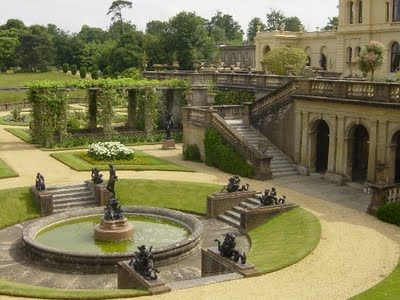 Victoria had grown up as a city girl, mostly within her palatial homes, but hated Buckingham, which had been built by the spendthrift George IV and so it was hated and resented by the taxpayers of the time. Victoria was the first monarch to live in it. Windsor reminded her much of her very painful childhood. There was much animosity amongst the family members, and she was in the middle of it all. Besides that, Victoria adored her Albert and wanted him to be happy. So when he wanted to find them a home that they actually owned and could adjust to their own tastes, she supported him eagerly.
Victoria had grown up as a city girl, mostly within her palatial homes, but hated Buckingham, which had been built by the spendthrift George IV and so it was hated and resented by the taxpayers of the time. Victoria was the first monarch to live in it. Windsor reminded her much of her very painful childhood. There was much animosity amongst the family members, and she was in the middle of it all. Besides that, Victoria adored her Albert and wanted him to be happy. So when he wanted to find them a home that they actually owned and could adjust to their own tastes, she supported him eagerly.
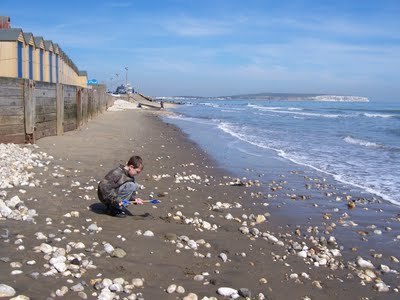 Shanklin beach - just one of the many natural attractions on the Isle of Wight. Osborne House became available on the Isle of Wight. The couple decided to rent the house for a year and spend some time there to see if they would be able to make it what they wanted. Within six days, they were sold on it and began the process of buying it with their own money. Albert took the lead in designing a new section, remodeling and landscaping. He changed rough and natural landscape with leveling, terracing and regal balustrades, urns and fountains. The home was wonderfully adapted for their growoing family. The couple spent much time with their children in comparison to the aristocratic practices of the day. Albert carefully oversaw the goings on of the nursery and those who were employed to work in it. Osborne House was Albert's provision for his family, where he could fulfill the role of husband and father in his way. Although Albert died in his early forties, Victoria thoroughly enjoyed all that he created for the rest of her life.
Shanklin beach - just one of the many natural attractions on the Isle of Wight. Osborne House became available on the Isle of Wight. The couple decided to rent the house for a year and spend some time there to see if they would be able to make it what they wanted. Within six days, they were sold on it and began the process of buying it with their own money. Albert took the lead in designing a new section, remodeling and landscaping. He changed rough and natural landscape with leveling, terracing and regal balustrades, urns and fountains. The home was wonderfully adapted for their growoing family. The couple spent much time with their children in comparison to the aristocratic practices of the day. Albert carefully oversaw the goings on of the nursery and those who were employed to work in it. Osborne House was Albert's provision for his family, where he could fulfill the role of husband and father in his way. Although Albert died in his early forties, Victoria thoroughly enjoyed all that he created for the rest of her life.
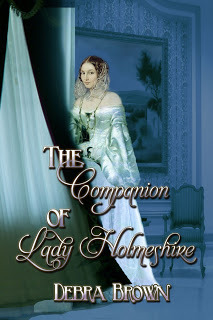 --
--
Debra Brown, Author of The Companion of Lady Holmeshire
To be published in 2011 by World Castle Publications
Book Website:
Blog: http://englishepochs.blogspot.com
Grace: Thank you so much for visiting Debra.
(I'm lucky enough to have an advance copy of 'The Companion of Lady Holmeshire' and its next on my list...I can't wait to get reading!)
Have you visited the Isle of Wight? Do you have a special hideaway you love to visit?
We'd love to know - please share with us and leave a comment.
G x

Today I'm doubly delighted: firstly to welcome historical fiction author, Debra Brown, to the blog, and secondly because Debra writes about Osborne House on the Isle of Wight, a place very close to my heart.
Welcome Debra!
 Osborne House - the main building can be glimpsed through trees for miles around.
Albert and Victoria's Family Home
Osborne House - the main building can be glimpsed through trees for miles around.
Albert and Victoria's Family Home
(Note that I did not say Victoria and Albert!)
The very first years of their marriage was a real trial for Albert. He had grown up in The Rosenau, the country residence of the Dukes of Coburg, enjoying the rural delights of life. After marrying the Queen, he was stuck in HER homes, Buckingham Palace, with so much soot in the air that they could barely breath (nor could anyone else in the Town)and Windsor Castle, which at the time had not the parks and grounds that it does today. Indeed, they were hemmed in tightly in comparison. Albert was relegated to the position of a disapproved foreigner and an observer at first, but over some months began to insist that things be run more efficiently and economically at Buckingham. He truly did make some excellent changes, but it was still the English people's Queen's home.
http://englishtimes101.us
 Victoria had grown up as a city girl, mostly within her palatial homes, but hated Buckingham, which had been built by the spendthrift George IV and so it was hated and resented by the taxpayers of the time. Victoria was the first monarch to live in it. Windsor reminded her much of her very painful childhood. There was much animosity amongst the family members, and she was in the middle of it all. Besides that, Victoria adored her Albert and wanted him to be happy. So when he wanted to find them a home that they actually owned and could adjust to their own tastes, she supported him eagerly.
Victoria had grown up as a city girl, mostly within her palatial homes, but hated Buckingham, which had been built by the spendthrift George IV and so it was hated and resented by the taxpayers of the time. Victoria was the first monarch to live in it. Windsor reminded her much of her very painful childhood. There was much animosity amongst the family members, and she was in the middle of it all. Besides that, Victoria adored her Albert and wanted him to be happy. So when he wanted to find them a home that they actually owned and could adjust to their own tastes, she supported him eagerly. Shanklin beach - just one of the many natural attractions on the Isle of Wight. Osborne House became available on the Isle of Wight. The couple decided to rent the house for a year and spend some time there to see if they would be able to make it what they wanted. Within six days, they were sold on it and began the process of buying it with their own money. Albert took the lead in designing a new section, remodeling and landscaping. He changed rough and natural landscape with leveling, terracing and regal balustrades, urns and fountains. The home was wonderfully adapted for their growoing family. The couple spent much time with their children in comparison to the aristocratic practices of the day. Albert carefully oversaw the goings on of the nursery and those who were employed to work in it. Osborne House was Albert's provision for his family, where he could fulfill the role of husband and father in his way. Although Albert died in his early forties, Victoria thoroughly enjoyed all that he created for the rest of her life.
Shanklin beach - just one of the many natural attractions on the Isle of Wight. Osborne House became available on the Isle of Wight. The couple decided to rent the house for a year and spend some time there to see if they would be able to make it what they wanted. Within six days, they were sold on it and began the process of buying it with their own money. Albert took the lead in designing a new section, remodeling and landscaping. He changed rough and natural landscape with leveling, terracing and regal balustrades, urns and fountains. The home was wonderfully adapted for their growoing family. The couple spent much time with their children in comparison to the aristocratic practices of the day. Albert carefully oversaw the goings on of the nursery and those who were employed to work in it. Osborne House was Albert's provision for his family, where he could fulfill the role of husband and father in his way. Although Albert died in his early forties, Victoria thoroughly enjoyed all that he created for the rest of her life.  --
-- Debra Brown, Author of The Companion of Lady Holmeshire
To be published in 2011 by World Castle Publications
Book Website:
Blog: http://englishepochs.blogspot.com
Grace: Thank you so much for visiting Debra.
(I'm lucky enough to have an advance copy of 'The Companion of Lady Holmeshire' and its next on my list...I can't wait to get reading!)
Have you visited the Isle of Wight? Do you have a special hideaway you love to visit?
We'd love to know - please share with us and leave a comment.
G x
Published on May 25, 2011 00:03
May 22, 2011
The 'Sin Tax'.
 King John - as pictured in an early manuscript. Today's blog post looks at the'Sin Tax'imposed by King John.
King John - as pictured in an early manuscript. Today's blog post looks at the'Sin Tax'imposed by King John.King John (whose name is inextricably linked with stories of Robin Hood) came to the throne (1199) after the death of his brother, Richard the Lionheart. The one thing historians seem to agree on is that John's personality was dangerously flawed: greedy, petty and selfish, with an inability to see anyone's viewpoint but his own.
King John imposed heavy taxes, for example, a tax of sixteen pence in the pound on a wide range of imported goods. But one of his more unusual taxes was the 'Sin Tax', imposed after John was excommunicated for refusing to approve the Pope's choice for Archbishop of Canterbury.
 King John signing the Magna Carta at Runymede. John ordered his men to seize the wives, and 'hearth-mates' or concubines, of the clergy, to be held for ransom. The women would only be released on payment of a high price or 'Sin Tax'. However it wasn't just the clergy who felt aggrieved. By 1215 the nobility had had enough of John's heavy taxation and rebelled. They seized London, forcing John into a meeting at Runnymede to accede to their demands and sign the Magna Carta, or 'Great Charter.' This document lay down rules to protect individuals from the unfair demands of the monarch. After the Magna Carta:"The church is free to make its own appointments."And"No more than the normal amounts of money will be collected by the government." And accordingly the tax was abolished on the wives and hearth-mates of clergymen.
King John signing the Magna Carta at Runymede. John ordered his men to seize the wives, and 'hearth-mates' or concubines, of the clergy, to be held for ransom. The women would only be released on payment of a high price or 'Sin Tax'. However it wasn't just the clergy who felt aggrieved. By 1215 the nobility had had enough of John's heavy taxation and rebelled. They seized London, forcing John into a meeting at Runnymede to accede to their demands and sign the Magna Carta, or 'Great Charter.' This document lay down rules to protect individuals from the unfair demands of the monarch. After the Magna Carta:"The church is free to make its own appointments."And"No more than the normal amounts of money will be collected by the government." And accordingly the tax was abolished on the wives and hearth-mates of clergymen.
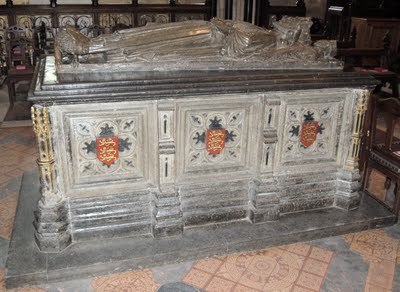 King John's tomb - Worcester Cathedral.
King John's tomb - Worcester Cathedral. If you had the power, what unusual tax would you put in place, and why?
Published on May 22, 2011 06:56
May 18, 2011
Cat Gut Your Tongue?

Some Cat Gut Trivia.
What are violin strings traditionally made from?
A) Cat gut,B) Steel wire orC) Sheep intestine.
The answer, of course, is (c) sheep intestine. So why then are violins, stringed instruments and tennis rackets said to be strung with 'cat gut'?
It seems the answer lies with a medieval myth about16th century saddle maker, Erasmo. (*)
The story goes that Erasmo, working in the Italian mountain village of Salle, heard wind blowing musically through a drying rack laced with sheep intestine. It occurred to him what a good string the gut would make for a musical instrument. He experimented with a form of renaissance fiddle, the forerunner of the violin, and the resulting sound was so good he worried his idea would be stolen. When competitors asked what his strings were made from, his answer was "Cat gut," since it was considered extremely bad luck to kill a cat and he hoped to deter imitation.
 PS - Dont breath a word of this to Widget! Erasmo was made the patron saint of string makers and Salle became the centre of Italian violin string manufacture for 600 years. The best strings were made by stripping the fat from warm, freshly removed sheep's gut, which was then soaked in cold water. The best sections were then cut into ribbons, twisted and scraped until a string of the required thickness was made. As late at the early 20th century, the change to steel strings was made, because of a shortage of sheep intestine with the advent of the First World War.
PS - Dont breath a word of this to Widget! Erasmo was made the patron saint of string makers and Salle became the centre of Italian violin string manufacture for 600 years. The best strings were made by stripping the fat from warm, freshly removed sheep's gut, which was then soaked in cold water. The best sections were then cut into ribbons, twisted and scraped until a string of the required thickness was made. As late at the early 20th century, the change to steel strings was made, because of a shortage of sheep intestine with the advent of the First World War. 
(*) Some say that 'Cat gut' may be an abbreviation of 'Cattle gut', or indeed a corruption of 'Kitstring', where 'kit' refers to a folk term for a fiddle. However, to my ear, Erasmo's story has the ring of human nature about it….
[With thanks to cheezburger.com for the last image.]
Published on May 18, 2011 07:27
May 15, 2011
Rats or Cats? - Facing Phobias.
 My mid week blog post involved the Emperor Napoleon and 30,000 rabbits. Writing that post reminded me of Napoleon's reputation for being afraid of cats. Apparently this was an open secret amongst his contemporaries, friend and foe alike. Indeed, during an important political debate, an opponent got the upper hand and threw Napoleon off his stride, merely by bringing the subject of cats into the conversation.
My mid week blog post involved the Emperor Napoleon and 30,000 rabbits. Writing that post reminded me of Napoleon's reputation for being afraid of cats. Apparently this was an open secret amongst his contemporaries, friend and foe alike. Indeed, during an important political debate, an opponent got the upper hand and threw Napoleon off his stride, merely by bringing the subject of cats into the conversation. Another example of this deep seated fear happened during the campaign for the Battle of Wagram. An Aide de Campe passed Napoleon's tent and was alarmed to hear screams and cries for help. Fearing his leader to be in mortal danger, the Aide drew his sword and burst in.... to find Napoleon sweating profusely and wildly stabbing at the air…because a stray cat had wandered into the tent!

My favourite Napoleon-and-cat story, and wonderfully demonstrates the British sense of humour, takes place after the Emperor's defeat by Wellington at the Battle of Waterloo. Sent into exile on the island of Saint Helena, Napoleon's new residence was the damp, vermin infested estate at Longwood. Contemporary accounts report:
"Rats…came out at night…so thick as the floor appeared black."
Over time reports filtered back to England that the French Emperor had been bitten by a rat. Magnanimous in victory and ever compassionate, posters appeared in English market places offering the princely sum of sixpence per cat for those collecting felines go to Napoleon's aid. Strays and farm cats were rounded up by the wagon load and a special ship commissioned to carry this special live cargo to Saint Helena and rid the prisoner of his vermin infestation. Poor Napoleon, this must have been a case of "good news" and "bad news" when that shipped docked!
 Ahhh - Widget! (Guess where I stand on cats!)I'm not a fan of spiders (to put in mildly) and if my house was infested with flies, I wouldn't be overly pleased to receive boxes of spiders….so how about you? Would you rather put up with rats and flies….or be prepared to face a phobia?
Ahhh - Widget! (Guess where I stand on cats!)I'm not a fan of spiders (to put in mildly) and if my house was infested with flies, I wouldn't be overly pleased to receive boxes of spiders….so how about you? Would you rather put up with rats and flies….or be prepared to face a phobia?
Published on May 15, 2011 11:31
May 11, 2011
Exit Napoleon Pursued by Rabbits.

My midweek blog post is a blend of animals, history and trivia! This almost Monty Pythonesque tale involves the French Emperor Napoleon, his Major General 'Berthier the Ugly' and 30,000 rabbits. But first, some background to the story.
Events are reported by Andrew Roberts (historian and biographer) in his book: "The Battle of Waterloo – and the great commanders who fought it."
 Roberts' book aims not just to give a factual account of battles, but to get under the skin of the main protagonists: Bonaparte and Wellington.
Roberts' book aims not just to give a factual account of battles, but to get under the skin of the main protagonists: Bonaparte and Wellington. In 1815, the Battle of Waterloo was Napoleon's greatest defeat but, according to Roberts, it wasn't the Emperor's most embarrassing one. This award goes to an afternoon's sport in 1807, after Napoleon signed a peace treaty with Russia and Prussia.To celebrate 'The Peace of Tilsit', Napoleon ordered his Chief of Staff, Major General Berthier, to entertain the Imperial Courtwith an afternoon rabbit shoot.

Known as 'Berthier the Ugly' because of his squat build and talon like nose, he had a healthy respect for Napoleon. In fact this successful General, with many victories under his command, is quoted as saying:"I don't know why but that little b*****d scares me."
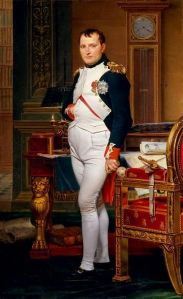 Napoleon Bonaparte.In order to make the hunt a success Berthier 'imported' 30,000 rabbits. However, what he didn't realize was high taxation had forced peasants to trap and eat all the wild rabbits. In order to fulfill Berthier's demands for game, local gamekeepers had to buy captive bred rabbits, fattened up for eating, and release them into the wild. These same rabbits, not having eaten for 24 hours, when they saw a short man in a big hat (Napoleon) approaching, assumed it was food being delivered and mobbed him. Napoleon's retainers beat the rabbits off with whips, but there were just too many and the Emperor was forced to flee back to the safety of his carriage…making this by far his most humiliating defeat.
Napoleon Bonaparte.In order to make the hunt a success Berthier 'imported' 30,000 rabbits. However, what he didn't realize was high taxation had forced peasants to trap and eat all the wild rabbits. In order to fulfill Berthier's demands for game, local gamekeepers had to buy captive bred rabbits, fattened up for eating, and release them into the wild. These same rabbits, not having eaten for 24 hours, when they saw a short man in a big hat (Napoleon) approaching, assumed it was food being delivered and mobbed him. Napoleon's retainers beat the rabbits off with whips, but there were just too many and the Emperor was forced to flee back to the safety of his carriage…making this by far his most humiliating defeat. 
TEASER: But of course, Napoleon was terrified of cats….more of this in another post!

Published on May 11, 2011 10:25
'Familiar Felines.'
Following on from last weeks Halloween posting, today's blog post looks at the unwanted image of cats as the witches familiar - from the Norse Goddess Freya to lonely women in the middle ages.
The full Following on from last weeks Halloween posting, today's blog post looks at the unwanted image of cats as the witches familiar - from the Norse Goddess Freya to lonely women in the middle ages.
The full post can found at:
http://graceelliot-author.blogspot.com
...more
The full Following on from last weeks Halloween posting, today's blog post looks at the unwanted image of cats as the witches familiar - from the Norse Goddess Freya to lonely women in the middle ages.
The full post can found at:
http://graceelliot-author.blogspot.com
...more
- Grace Elliot's profile
- 156 followers



